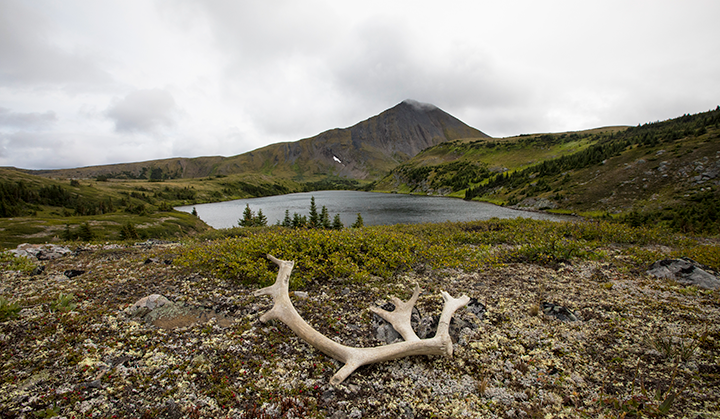Master’s research uncovers the need for meaningful and equitable restoration of caribou habitat degraded by mining
Caribou are an important and iconic species. They represent many facets of the human-nature relationship: ecosystem health, deeply-rooted culture, and hope, to name a few.
As caribou populations have rapidly declined across Canada, caribou also represent the urgent need for change — especially the need to shift to a reciprocal relationship with the land.
In British Columbia (B.C.), coal mining and other industrial development are degrading habitat for caribou and other species at risk. We know that habitat loss is one of the leading causes of their disappearance; and yet, habitat is not being restored to a functioning and healthy state.
To get project permits and approvals, reclamation is the “promise” resource companies make to regulators to reduce environmental impacts. However, it can take years for reclamation to be completed, if done at all. Also, any reclamation that is carried out is often of poor quality and incompatible with caribou’s needs for habitat.
Master’s graduate Rachel Singleton-Polster, a social scientist and one of Y2Y’s 2020 Sarah Baker Memorial Fund grant recipients, looked at how, and why, this is happening in caribou habitat. Her research identifies some reasons for a lack of accountability and transparency regarding mine reclamation in the Peace River region of northeastern B.C. — and what can be done.
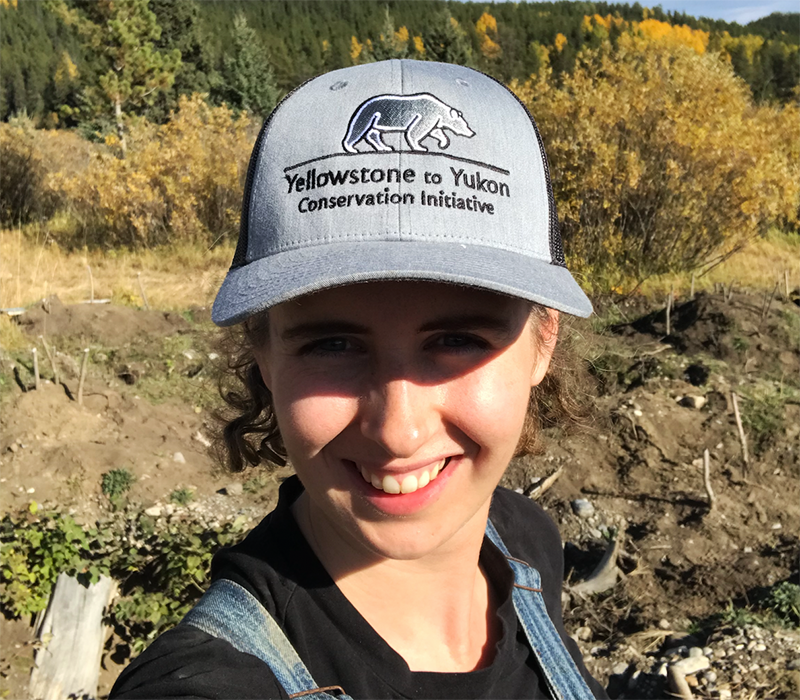
Understanding caribou and habitat restoration
Learning about the impact of mine reclamation on caribou populations, specifically, can help put the focus back on Indigenous priorities and sovereignty, explains Rachel.
“When I worked for the Union of British Columbia Indian Chiefs, I was involved in advocating against the Site C Dam in the Peace River region, which violates treaty rights and degrades wildlife habitat,” she says. “I was fortunate to have been in that region, appreciate the landscapes, and hear touching stories about how loss of caribou affects the local First Nations.”
Along with the drive to better understand caribou’s significance, Rachel’s interest in researching mine reclamation is inspired by the lifelong work of her father, Dave Polster. As a prominent restoration ecologist, he was involved in restoration and mine reclamation since Rachel was a child.
“My perspective in writing my thesis, and my strong opinion that B.C. needs to move from the narrow focus of traditional reclamation towards restoration that encompasses ecological, social, cultural and spiritual values, comes from my father,” says Rachel.
With that in mind, her research emphasizes the need to shift from inadequate reclamation practices to meaningful and equitable restoration, to heal the landscapes that wildlife and people rely on.
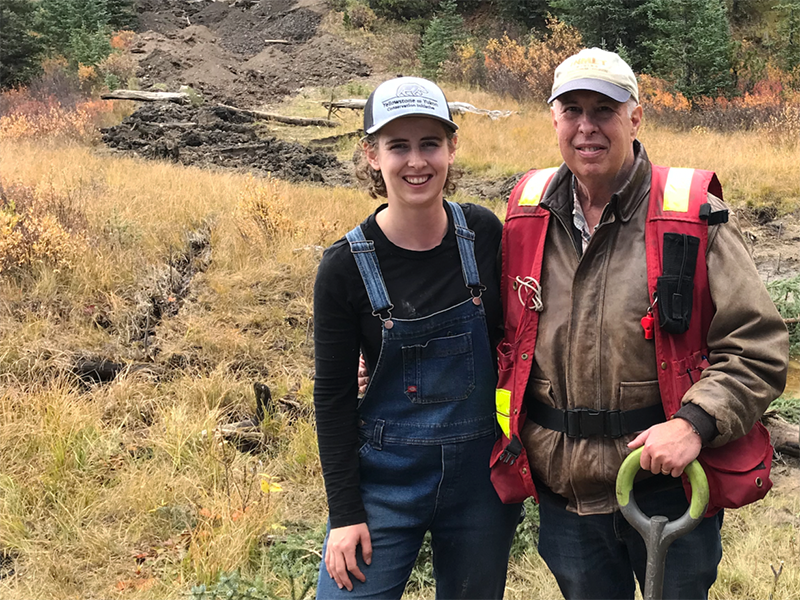
Giving back to the land
According to Indigenous scientist, professor and author, Robin Wall Kimmerer, ecological restoration can be understood as an act of reciprocity, in return for the gifts of the earth. It’s this concept of reciprocal restoration that, Rachel says, helped frame her research.
“There are many cases where industrial development, like mining, has harmed wildlife habitat,” says Rachel. “But we can also see that reciprocal restoration of these landscapes works.”
“There are many cases where industrial development, like mining, has harmed wildlife habitat. But we can also see that reciprocal restoration of these landscapes works.”
Rachel Singleton-Polster, 2020 Sarah Baker Memorial Award recipient
The collaborative efforts of West Moberly First Nations, Saulteau First Nations, and others, to recover the Klinse-Za caribou herd in northern B.C. exemplifies what can be done through Indigenous-led habitat protections and restoration. For example, West Moberly First Nations and Saulteau First Nations have ventures that work to restore old oil and gas well sites and mining operations, including by using native plants grown in a Nation-run plant nursery.
“A conservation approach where all potential solutions are taken at once is what the province and Canada must do more of, for other herds and habitat. This is good news for the Klinse-Za herd but there are 21 other southern mountain caribou groups in B.C. that need this kind of help,” said Y2Y B.C. program manager, Tim Burkhart.
A recent study on this work shows there’s hope for caribou and other species at risk when governments step up, listen and act on Indigenous Knowledge and science.
In her research, Rachel articulates some of the ideal principles of restoration that show it’s possible to shift from traditional reclamation approaches in mining to more holistic restoration practices.
This requires a restoration of relationship to the land that is equivalent to the environmental goals of restoration — a reminder of the interconnection of people and nature.
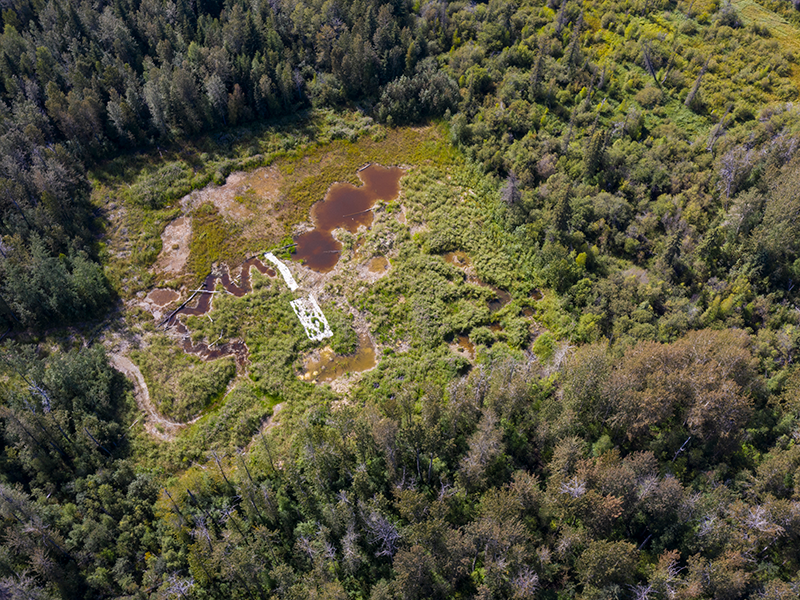
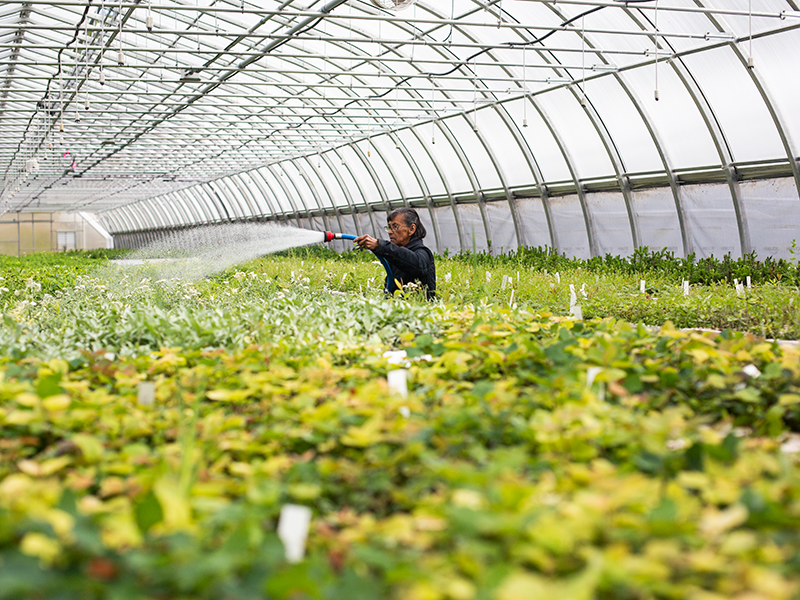
Meaningful caribou habitat restoration starts now
Another study published by Rachel’s research team found that the financial and economic benefits from coal mines in northeastern British Columbia fell short of delivering what was promised, while caribou habitat destruction has continued. Rachel’s research builds on this work by identifying the regulatory barriers to mine reclamation for caribou.
To pinpoint where reclamation rules in B.C. are failing caribou, she first wanted to understand the rules and history that govern reclamation in the province. Then, she looked at a selection of coal mines in the Peace River region to see if these rules are good enough to support caribou recovery, and if they’re being followed and enforced. Finally, if the rules were being avoided or bent, Rachel assessed how, and why, this was happening.
From this, four pitfalls in the B.C. regulatory process were identified: reclamation time extensions, spatial disturbance avoidance, lack of effective land-use planning, and lack of financial responsibility.
This research also found reclamation of coal mines occurs on a drawn-out timeline to reduce a company’s financial obligations and maximize profits. In other words, reclamation, if done at all, is not on the timeline that vulnerable species such as caribou need to come back from the brink.
Mine companies have also been able to avoid their reclamation responsibilities.
“Companies are granted significant exemptions by regulators, conduct reclamation to a low standard, or simply leave areas un-reclaimed all-together,” explains Rachel. “This is a huge loophole in the regulatory process.”
“Companies are granted significant exemptions by regulators, conduct reclamation to a low standard, or simply leave areas un-reclaimed all-together. This is a huge loophole in the regulatory process.”
Rachel Singleton-Polster, 2020 Sarah Baker Memorial Award recipient
Land-use planning is another important stage in the life of a mine that can, and should, include a diverse range of people who are implicated and affected — including Indigenous Peoples who are impacted by the loss of caribou, and are often the ones left to recover degraded habitat in their territories.
“End land-use planning”, which is meant to guide the fulfillment of reclamation, must be more transparent, realistic and backed by science in order to achieve certain objectives (e.g., wildlife habitat, traditional use, or agriculture use) after the project is done.
Finally, the question of financial responsibility was an important part of Rachel’s research. This means holding companies accountable — ensuring mines don’t remain in limbo and that First Nations or taxpayers aren’t the ones paying for the clean-up in the end.
While this research highlights regulatory gaps in B.C. this issue also persists in other parts of the Yellowstone to Yukon region, such as in Alberta where the footprint of coal mine exploration is leaving a recognizable impact.
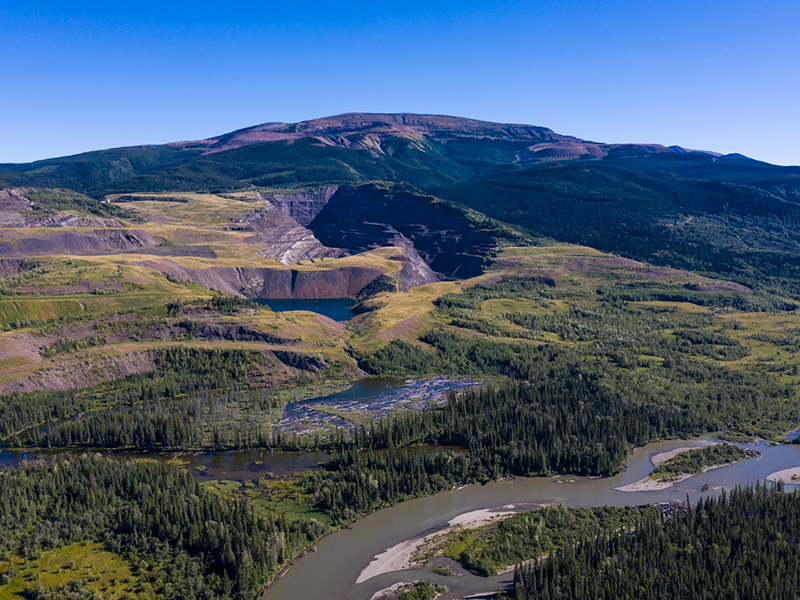
Hope for healing habitat
Rachel says that identifying solutions, not just wrongdoings, is important. Additionally, meaningful restoration, not reclamation, will be key in this journey.
“One of the perceptions that inhibit good restoration is the idea that it’s hopeless, that the damages done by mining are too severe — but there are effective, simple and cost-effective restoration methods available,” says Rachel. “People are already involved in these efforts, including many individuals working in industry and government roles who want to do the right thing.”
Reflecting on what she has learned from her father about ecosystem restoration and a love of nature, Rachel feels a strong sense of hope having completed her thesis.
“Hope for a better world, which was ingrained in me as a child, reassures me that we can still do good,” says Rachel. “The support from the Sarah Baker Memorial Fund and the Y2Y team throughout my studies has been tremendously helpful in progressing this work.”
We all win when we do our part to save species such as caribou. Connecting and protecting wildlife habitat is critical for supporting biodiversity and healthy ecosystems, especially as the climate changes.
The kinds of tangible actions proposed in Rachel’s research are ones that decision-makers, and society, should embrace in the Yellowstone to Yukon region and beyond. Only then can we look to a future where nature and people can thrive.
Further reading on this topic:
- Blog post | The true costs of habitat loss and restoration in northern British Columbia
- Website | The extinction paradox: An investigation into accelerating loss of wild abundance in a time of unprecedented protection
- Research paper | Collard R., Dempsey J., Muir B., Allan, R., Herd A., Bode P. (2023). Years late and millions short: A predictive audit of economic impacts for coal mines in British Columbia, Canada, Environmental Impact Assessment Review. doi.org/10.1016/j.eiar.2023.107074
About the Sarah Baker Memorial Fund
The Sarah Baker Memorial Fund supports science by early-career researchers that advance Y2Y’s conservation strategy and result in tangible benefits within the region. Sarah Jocelyn Baker’s appreciation for the natural world and ability to find solutions resonate with the aspirations and vision of Y2Y. We are honored to carry her spirit forward through the Sarah Baker Memorial Fund. Thanks to a gift from her extended family, Y2Y can offer grants to post-secondary students and postdoctoral fellows pursuing environmentally related studies at post-secondary institutions in Canada or the United States.
